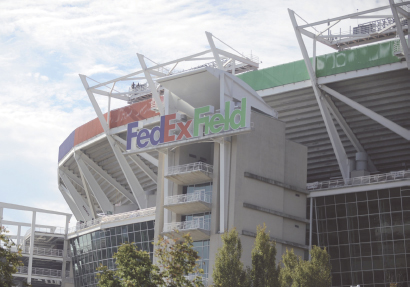Printed Page 343
CONVERGING MEDIA
Case Study

Naming Rights as Convergent Advertising
Selling naming rights to sporting venues is as old as Boston’s Fenway Park. When the park was christened in 1912, the name paid tribute to Fenway Realty, a local enterprise linked to the stadium’s owner. Chicago’s Wrigley Field and St. Louis’s Busch Stadium are also vintage examples of corporate names being stamped onto ball parks. However, the digital age has reinvigorated this type of high-profile advertising. Many businesses have found that branding sports facilities is a cost-effective way of waving their flag across a broad range of platforms.
For some professional sports franchises, this type of sponsorship represents a major funding stream; as a convergent media strategy, naming rights to a sports setting can be an expensive, long-term investment. In 2001, for instance, PNC Bank agreed to a twenty-year, $30 million deal to affix its name to the Pittsburgh Pirates’ new stadium, and the H. J. Heinz Company inked a twenty-year contract with the Pittsburgh Steelers for naming rights to another new stadium. This strategy has spread to nonprofessional sports as well: college football bowl games have increased from just five in 1940 to over thirty-five today, all with branded sponsors. As advertising costs go, sponsoring even a small bowl game may make sense. In 2012, the Idaho Potato Commission paid $375,000 for naming rights to the Famous Idaho Potato Bowl; compare this to the cost of a thirty-second spot on the Super Bowl the same year: $3.5 million.
This branding ensures the sponsor regular mention in print or digital media reports on events that take place in the facility, elevating the awareness of a company both locally and nationally. Etching a name on a landmark results in the brand appearing free-of-charge on maps, tourist Web sites, and road signs.
Name placement does not always turn out as hoped, as the once and present Candlestick Park demonstrates. The original and current name was selected in 1959 from a write-in contest. In 1995, 3Com paid $4 million to San Francisco for naming rights to the stadium. Fans received the name change with a mixture of hostility and indifference. At the end of seven years, 3Com chose not to renew and the name was changed to Monster Park after Monster Cable paid $6 million for four years of naming rights. The citizens of San Francisco had had enough and in 2004 passed a referendum mandating that the original name be restored after the end of the Monster deal in 2008.
The current prominence of naming rights is a symptom of the postconvergence challenges facing advertisers. Advertisers once enjoyed a more captive audience; viewers tended to stay tuned to the same station for multiple hours of programming and accompanying ads. In today’s media environment, viewers can watch shows on their DVRs, computers, and phones—platforms that make skipping or ignoring advertising comparably easier. Advertisers, then, must be more resourceful in finding ways to raise consumer awareness and enhance a company’s brand. Naming rights make a sponsor unavoidable even to those who may record a game and fast-forward the commercials. This sort of built-in advertising will likely become even more common; as different media continue to converge, so will advertising and entertainment.